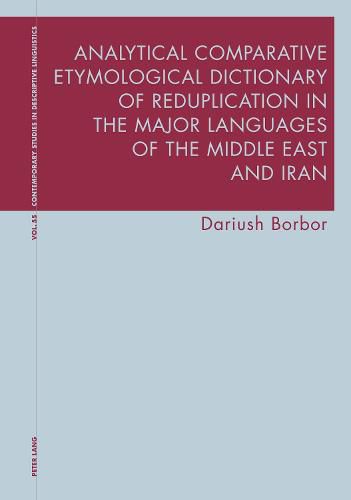Readings Newsletter
Become a Readings Member to make your shopping experience even easier.
Sign in or sign up for free!
You’re not far away from qualifying for FREE standard shipping within Australia
You’ve qualified for FREE standard shipping within Australia
The cart is loading…






<>
(Adriano V. Rossi, Professor Emeritus of Iranian Philology, DAAM, University of Naples L'Orientale and ISMEO, Rome)
<>
(Nicholas Sims-Williams, Professor Emeritus of Iranian and Central Asian Studies, School of Oriental and African Studies (SOAS), University of London)
<>
(? Ehsan Yarshater, Professor Emeritus, Center for Iranian Studies, Columbia University)
The present dictionary is an analytical, comparative and etymological presentation of reduplication over a wide spectrum of languages. The range of featured languages - Arabic, Armenian, Kurdish, Persian and Turkish - include three separate families connected only by geographical proximity, each with an extremely rich literary tradition. The dictionary covers multiple independent phenomena in several unrelated languages, the underlying idea being that their reduplications are all somehow connected, and that there exists a general <> of reduplication. The book is not limited to a single field, but rather for several largely separate ones, such as linguistic relations, the theory of reduplication and etymology. Several other related or unrelated languages such as Icelandic, Japanese, Egyptian Hieroglyphics, Hittite, etc. have been included for comparative purposes.
The preliminary findings of this study indicate that reduplication in the languages under study, and in nearly all other languages, deal mostly with the fundamental, primary human requirements. Another strong proof of the <> of reduplicates are that they closely follow the same and similar formation, development and rule in most related and unrelated languages. In consequence of the universality of reduplication and its near identical development in all related or unrelated languages, it even legitimizes the creation of a grammar of reduplication in the future. A few of the essential features of this book include: a complete revision and updating of the semantics; a particular attention to the cognitive aspects; and, many etymologies that cannot be found elsewhere.
$9.00 standard shipping within Australia
FREE standard shipping within Australia for orders over $100.00
Express & International shipping calculated at checkout
<>
(Adriano V. Rossi, Professor Emeritus of Iranian Philology, DAAM, University of Naples L'Orientale and ISMEO, Rome)
<>
(Nicholas Sims-Williams, Professor Emeritus of Iranian and Central Asian Studies, School of Oriental and African Studies (SOAS), University of London)
<>
(? Ehsan Yarshater, Professor Emeritus, Center for Iranian Studies, Columbia University)
The present dictionary is an analytical, comparative and etymological presentation of reduplication over a wide spectrum of languages. The range of featured languages - Arabic, Armenian, Kurdish, Persian and Turkish - include three separate families connected only by geographical proximity, each with an extremely rich literary tradition. The dictionary covers multiple independent phenomena in several unrelated languages, the underlying idea being that their reduplications are all somehow connected, and that there exists a general <> of reduplication. The book is not limited to a single field, but rather for several largely separate ones, such as linguistic relations, the theory of reduplication and etymology. Several other related or unrelated languages such as Icelandic, Japanese, Egyptian Hieroglyphics, Hittite, etc. have been included for comparative purposes.
The preliminary findings of this study indicate that reduplication in the languages under study, and in nearly all other languages, deal mostly with the fundamental, primary human requirements. Another strong proof of the <> of reduplicates are that they closely follow the same and similar formation, development and rule in most related and unrelated languages. In consequence of the universality of reduplication and its near identical development in all related or unrelated languages, it even legitimizes the creation of a grammar of reduplication in the future. A few of the essential features of this book include: a complete revision and updating of the semantics; a particular attention to the cognitive aspects; and, many etymologies that cannot be found elsewhere.